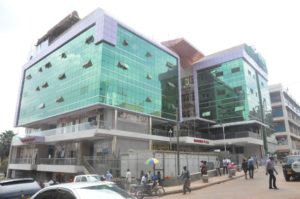What happened to Uganda’s Marketing Boards?
While delivering last year’s State of the Nation Address, President Museveni noted that his government remained committed to using “the export promotion and import substitution routes to storm across the middle- income barrier,” in reference to Uganda’s quest for a middle income status.
Although Uganda’s export earnings have increased over the years, from $5billion in 2016 to $7billion in 2019, they remain disproportionately dominated by agricultural products, which account for 80% of total exports.
Some of the leading exports include coffee, fish, maize, tobacco, and tea. The dominance of crops like cotton and coffee dates back to the colonial era when they were grown as official government crops.
The sector was mainly dominated by the Indians who established ginneries across the country and took over processing and marketing while government retained the research, seed breeding, extension services, input supply, and quality control functions. In addition, government established three textile mills and one spinning mill to add value to lint and to absorb the increasing production.
In the 1920s, coffee had been introduced, followed by tea and tobacco. Eventually, coffee overtook cotton in the 1930s as the country’s major foreign exchange earner, with cotton taking second place.
The Emergence of Marketing Boards
By the 1950s however, the population had started revolting against the private sector due to exploitation, and farmer cooperatives determined to organise and represent farmers’ interests gained momentum around 1952. In response, the government compensated the Asian entrepreneurs, took over ownership of cotton ginneries and transferred management to the Co-operative Unions.
Although the cooperatives succeeded in aggregating farmers’ produce, marketing remained a problem. This would lead to the emergence of statutory marketing boards, to among others, stabilise produce price in the face of fluctuating world prices, insure the commodity dependent economy against turbulent world market conditions, promote and encourage orderly marketing of the country’s leading crop exports, and promote an increase in their production. Other motivations included the strengthening of the producers’ bargaining power and guaranteeing a fair price for farmers.
Thus the Coffee Marketing Board was constituted under the Coffee Act of 1963, four years after the Lint Marketing Board was constituted under the Lint Marketing Board Ordinance (No.16) of 1959. Five years later, the Produce Marketing Board would be set up by the Produce Marketing Board Act of 1968 to create efficient marketing facilities for all controlled “minority’ cash crops like maize, wheat, beans, tobacco, millet, and sorghum.
The established Lint Marketing Board (LMB) had a monopoly of trade in all lint and cotton seeds, and soon, production shot up, registering Uganda’s highest ever cotton production of 470,000 bales of lint in 1969/70.

Marketing board (Internet Photo)
The farmers in primary societies supplied to the unions, who later sold to the various marketing boards.
But the subsequent instability in the country gravely affected the marketing boards, setting forward a downturn not just in their fortunes but in cotton production in general. By 1988, production had fallen to a record low of 11,000 bales.
“Uganda Cotton ceased to be traded by grade on the international market and was instead traded by source ginnery of the lint,” Joseph Kitandwe, the Registrar of cooperatives in the Ministry of Trade, Industry, and Cooperatives told theCooperator.
By the time the NRM government came to power in 1986, all the Marketing Boards, like other state corporations, were no longer the thriving enterprises they had once been. High running costs, huge debts and general mismanagement had left the boards on their knees, requiring bailouts from the central government.
Like other major public corporations facing the same dilemma, the marketing boards were consequently swallowed up in the liberalisation of the 90s that saw the economy shift from public control to private-led.
Although liberalisation gave the economy a much-needed boost, it had the reverse effect on producer organisations and cooperatives. Once-powerful cooperatives like East and West Mengo, and the Bunyoro Kitara Growers Cooperative Union all collapsed, precipitating the eventual closure of the Cooperative Bank that was their source of money for crop financing.
Dissolution of the Marketing Boards
Although it’s now more than two decades since these marketing boards were liquidated, contention remains on the manner in which the liquidation was done, and on the accountability of the funds accrued from the sale.
Reports persist for example, that the Shs 3.8 bn that accrued from the sale of the Produce Marketing Board (PMB) remains unaccounted for to-date. Mr Keith Muhakanizi, the then Privatization Unit accounting officer, and current secretary to the treasury says the money owed to PMB was written off as a bad debt.
It is not only the PMB that was irregularly sold off. The Coffee Marketing Board (CMB) premises based in Bugolobi, a Kampala suburb, were also irregularly sold off to an investor.
Testimonies given before the sectoral committee on Legal and Parliamentary Affairs on the petition by former workers of Coffee Marketing Board under liquidation, in 2013, show that its assets were freely given to an investor on the orders of the then State Minister for directives from President Museveni.
The former employees of CMB told Parliament that properties including buildings, land, machinery, and equipment were freely given out to investors.
Speaking on condition of anonymity, a former staff told theCooperator that the CMB properties were valued at Shs 33 bn in 1995 by Bageine and Property Holdings Limited, but would later be dubiously re-valued at Shs 6 billion in 1999.
Filling the gaps
Kitandwe says that in the place of the Lint Marketing Board, government established the Cotton Development Organisation (CDO) in 1994.
“Cotton marketing and processing were liberalised and the Cotton Development Organisation (CDO) was established as the authority to promote cotton production, processing and marketing and to regulate the cotton subsector,” he said.
The Coffee Marketing Board (CMB) was also replaced by the Uganda Coffee Development Authority (UCDA) with a relatively similar mandate.
It is the Produce Marketing Board that was not replaced by any central government authority. Instead, big private companies and organisations like Aponye, Josephs’ Initiatives, Afrokai, and the UN’s World Food Programme have risen in its place, to dominate the produce market.

World Food Programme in Nalukolongo. Internet photo
The restructuring meant that cooperatives could now interface directly with the buyers and ginners, without marketing board intermediaries.
“This was a very good opportunity for the farmers since it was reducing the number of middlemen between them and the market,” said Kitandwe.
There was one problem though. The liquidation of the marketing boards was not done alongside policy support for cooperatives to fill the ensuing gap.
“Government did not really seem to have Cooperatives in their plans. They (government), for example, didn’t mind how cooperatives would access credit for crop financing,” Kitandwe said.
As a result, a number of cooperatives, in a bid to enhance their capacity for the new mandate, turned to high-interest credit, which suffocated the majority.
“Majority lost property and closed shop with nothing left, due to huge debts,” Kitandwe said. He cited the example of the current Victoria University building along Jinja Road which was previously owned by East Mengo Growers Cooperative Union but was taken over after the Union failed to clear a bank loan.
Moreover, without the active membership of the farmers, the CDO struggled to gain traction amongst cotton farmers. Liberalisation also meant that new players entered the market, and with limited regulation, left many local farmers at the mercy of multiple middlemen, some unscrupulous.
But Mrs. Jolly Sabune, the Managing Director of Cotton Development Organisation (CDO) argues that, the restructuring has not been without gains. She says the CDO has supported the establishment of close to 2,000 acres of cotton farms spread in 20 districts, mostly tended to by prisons and army units. These, she says have helped increase and boost production.
Critics, however, argue that the biggest failure of the Cotton Development Organisation has been its inability to add value to exported cotton. Over 90% of locally produced lint is exported as raw material. So far, only 5% of what is produced (cotton) is consumed locally, mainly by the two lead firms, Fine Spinners in Bugolobi, Kampala and Jinja-based Nyanza Textile Industry.
Should Marketing Boards be revived?
In the past, there have been calls for the revival of marketing boards. But Kitandwe suggests, it is no longer necessary.
“Some cooperatives are already above this,” he told us. “Cooperatives like Sebei Elgon Cooperative Union, Ankole and Bugisu Cooperative Union are now selling directly to the international markets, under the Fair Trade Agreement.”
The Fair Trade Agreement is an instrument of the Cooperation for Fair Trade in Africa (COFTA), itself a network of Fair Trade support organisations that assist grassroots producers in the development of quality products, as well as providing market access support.
“Under this arrangement for example, Rwenzori Farmers Marketing Cooperative Society is the only primary society in the East Africa region certified to export cotton,” Mr. Joseph Kule Mayenda, the former export manager of Nyakatonzi Growers Cooperative Union in Kasese said.
“Others like Bukonzo Organic Cooperative Union are certified to export coffee, while Bundikakempa Growers Cooperative Society in Bundibugyo is certified to export cocoa worldwide.”
Several other cooperatives are operating under the same arrangement. These include Bukonzo Joint Savings and Credit Cooperative Society, Ankole Coffee Producer Cooperative Union in Bushenyi, Masaka Cooperative Union in Central and Bugisu and Sebei Elgon Cooperative Union. They’re all certified to export under the Fair Trade agreement.
“This is what other cooperative unions should emulate as a way of moving forward,” says Kitandwe.
But analysts argue that although the Fair Trade Agreement has been helpful to producer organisations in the short term, in the long term, it is unsuited to guarantee farmers fair prices and strengthen cooperatives.
Moreover, in the absence of marketing boards, cooperatives have been unable to guarantee quality standards of the produce. Kitandwe points that the issue of quality remains the preserve of the Ministry of Agriculture, Animal Industry and Fisheries (MAAIF).
But MAAIF department has not helped much, and substandard inputs continue to flood the market, affecting the quality of produce. The lack of structured procurement procedures for cooperatives also means that cooperatives are unable to tame the problem.
The Uganda Coffee Development Authority which took over the oversight function of the coffee sector says its mandate is limited to regulation and promotion.
“Our mandate does not extend to the buying and selling of coffee. That is for the private actors,” Dr. Emmanuel Iyamulemye, the Executive Director of UCDA told theCooperator in a phone interview. “Neither does it extend to the provision of credit; that’s the role of Microfinance Support Centre, and the Uganda Development Bank (UDB), that government has been recapitalising.”
But while it is true that part of the motivation for the recapitalisation of UDB and the Microfinance Support Centre is to provide low-interest credit to farmers, and industrialists, the two financial institutions’ broad mandate, and their still limited capital portfolio mean they are incapable of meaningfully propping up crop value chains.
Kitandwe notes that the only way to have the marketing boards revived is if cooperatives advocate for their revival like they did for the Cooperative Bank.
The post What happened to Uganda’s Marketing Boards? appeared first on The Cooperator News.
